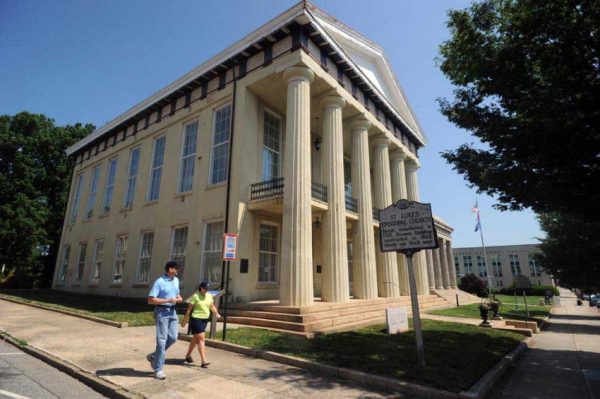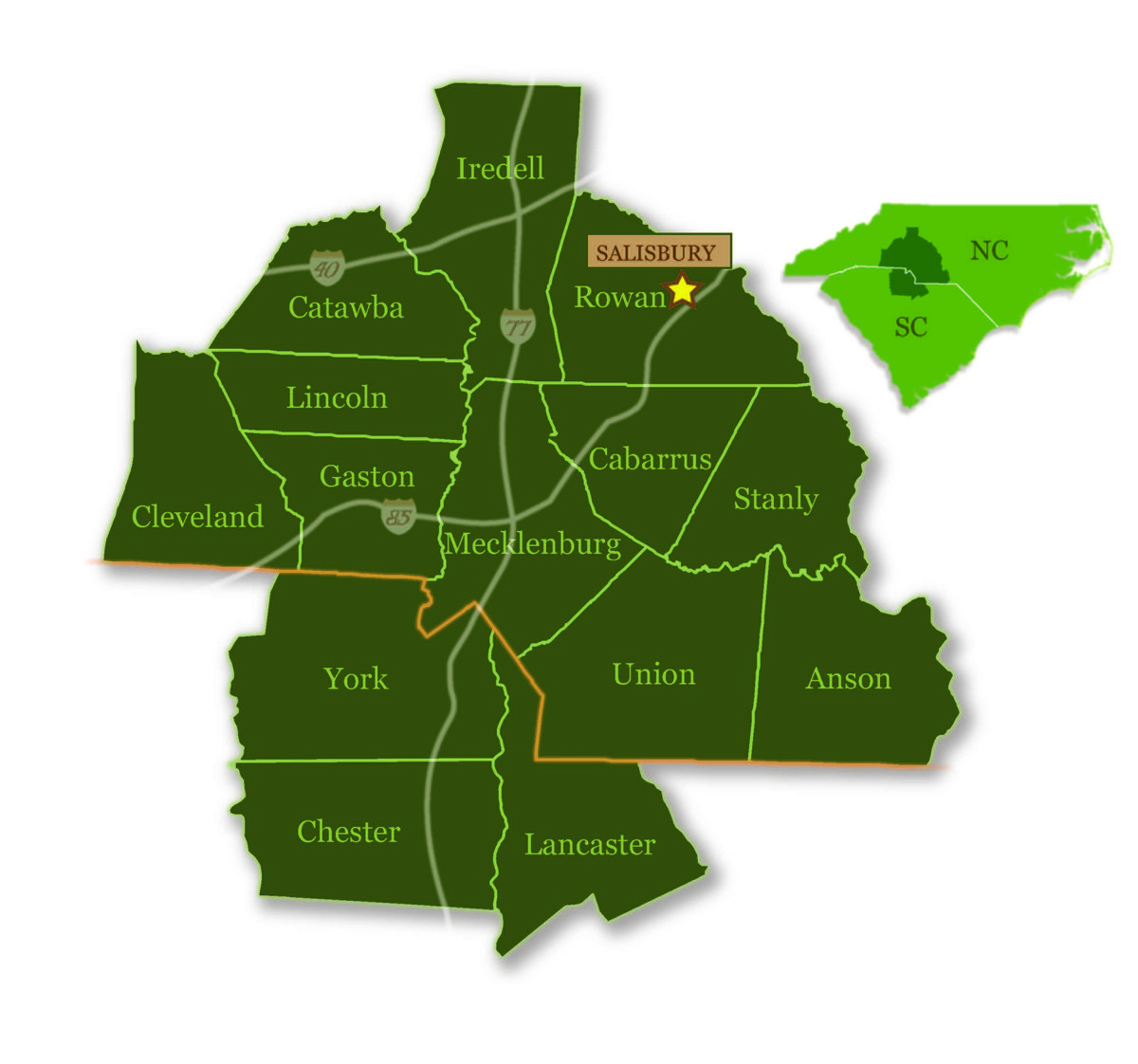Talk of the Towns: Salisbury

In this new series, PlanCharlotte visits planners from around the 14-county Charlotte region. In this second installment, we head north on I-85 to Salisbury in Rowan County. Salisbury, population 33,612, is the oldest city in the region. Its roots date to the 1750s, when colonial authorities established it as a county seat. Historic preservation remains a big part of the city’s identity. Janet Gapen has been with the city’s planning department for 10 years. She became planning director in July 2013. She discussed the city’s response to the housing downturn, its new form-based Land Development Ordinance and plans for a pedestrian- and bicycle-friendly “complete streets” retrofit of one of the city’s main corridors. Her remarks were edited for brevity and clarity.
Are you expecting growth or trying to attract it?

Janet Gapen: Our population growth has always been slow, but headed in a positive direction. Much of that has to do with our location. We’re just a little beyond the typical heavy commuter distance of Charlotte or the Greensboro/Triad area. We’re a bit removed from some of those growth pressures. So, we’re focusing on investing in ourselves.
We have not seen an uptick in residential subdivisions recently but have seen some of the development along I-85. We have seen interest in new commercial or infill commercial at outparcels in existing shopping centers.
How is your city coping with the economic downturn and recovery?
Gapen: We did at least three key things either heading into or during the recession that put us in a positive position. We adopted a form-based code in 2008. We had a 25-year-old code that had been amended and patched multiple times over many years. The new code provides more certainty to the developers that if they follow the code they have a sure expectation that their project, as long as it meets those requirements, will get a green light.
In about 2009 and 2010 we did some internal reorganization around our development-review process. We needed to make sure our internal processes were in line with the new code and that we had people in the right place. We developed a one-stop shop concept, so that when the developers come, they can talk to someone at the same location about water and sewer permits, their zoning and plan review, their FOG [Fats, Oils and Grease disposal] permits and their business licenses.
We also launched our own municipal broadband [called Fibrant] in 2010. We offer the highest base-internet speed in the state. We were part of that textile belt that has suffered in the last 20 years, and our city council felt technology would be the key to the future and what we needed to do to support business growth and education. As of Fiscal Year 2014-2015, Fibrant will be self-sustaining.
How important is traditional downtown development for the city?
Gapen: It’s extremely important. It is the base for tourism in our community and [important for] the tax revenue base it provides for the city overall. I’ve been following some studies out of Raleigh initiated by [former Raleigh Planning Director and current New York City Parks Commissioner] Mitchell Silver. His point was that when you invest in your downtown, you’re alleviating the tax burden on the other parts of the community because of the tax-generating potential of the downtown. You can keep your taxes low.
Read more Talk of the Town interviews |
Because of changes in annexation laws, we’re asking, ‘Where can we continue to build out areas that are within our city limits?’ One big thing we
’ll launch this year is incentives for residential development downtown. We have a number of buildings with capacity for upper-floor residential development but they’re going unused because of uncertainty about what the demand might be. We’re proposing financial incentives – grants that would be quite substantial [in hopes of] bringing in residential units, whether condos or apartments. The Plaza Apartments [a seven-story, city-owned apartment building in downtown] are seeing a waiting list.
We’ve proposed four incentives for the downtown mixed-use zoning district:
- A historic rehabilitation grant for mixed-use or commercial projects of up to 25 percent of costs with a $50,000 maximum.
- A $7-per-square foot grant for residential construction or rehabilitation with a $100,000 maximum.
- A utility services rehabilitation grant covering 50 percent of water, sewer and backflow prevention on residential projects with a $25,000 maximum.
- A fire line installation grant of 50 percent of costs up to $25,000. Projects could be eligible for more than one grant, and the grants can be layered.
I’m hoping to introduce them in August or September for City Council consideration.
If we can double the number of people who live downtown, we’ve doubled the market base for restaurants, retail.

Historic preservation is huge in Salisbury. What are the next steps?
Gapen: We created a historic preservation master plan in 2010 and streamlined historic district guidelines. Historic preservation has been particularly important in the downtown. The combination of local incentives plus the historic preservation tax credits have helped with that. It is a magnet for tourism and it is a base for business development in the downtown.
Does Salisbury face any environmental problems or have environmental success stories?
Gapen: We’re fortunate to have the Center of the Environment at Catawba College. We have good partnerships with them. The city has been most involved in park and greenway development. We’ve been participating in the Carolina Thread Trail Initiative and hoping to expand that into Rowan County.
What planning strategy are you most proud of?
Gapen: We’ve been able to do significant redevelopment downtown and near downtown as a result of public-private partnerships. A recent example is a redevelopment along North Lee Street. It is an area of former historic industrial buildings near the train depot. They’ve been renovated to include a black box theater [a performance space for experimental theater], artist studios and an arts incubator. The private property owner rehabilitated all of the buildings, brought in the businesses and organizations. Then the city invested in streetscapes and underground utilities and made it a much more attractive area. We had a technology upstart go into one of those spaces several years ago, Integro Technologies. Since then, they have outgrown their starter space and they’ve built a new $4 million building, which also includes a business center that they will lease out.
What have been your biggest challenges as far as planning goes?
We have challenges with our transportation corridors related to NCDOT [N.C. Department of Transportation]. So many of our primary corridors, including Innes Street and Main Street, are NCDOT thoroughfares. We partner with [NCDOT] but sometimes it complicates the [streetscape planning] process.
Can you tell me more about the “Complete streets” plan for East Innes Street?
The draft plan includes carefully designed medians to provide pedestrian refuges on East Innes Street from I-85 to Church Street. On South Long Street we have a public pool. South Long was widened in the ’60s to be much wider than it needs to be. So it’s been a challenge for pedestrians. A specific block had a couple of pedestrian fatalities. Our next goal will be to reach out to some specific property owners along Innes Street just so they fully understand the plans. The designers have been careful not to eliminate left turns wherever possible. [The total cost] is about $3 million, which is very reasonable considering the impact the improvements will make.
What’s the next big thing for planning in Salisbury?
We hope it will be to double our residential spaces downtown. We’ll also have a redevelopment corridor study of South Main Street downtown. This will be a comprehensive zoning study. It’s an area just ripe for redevelopment. There are a lot of vacant buildings or buildings with massive expanses of asphalt parking that aren’t used anymore.
